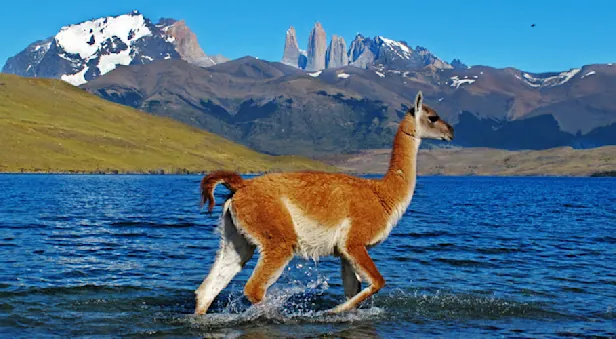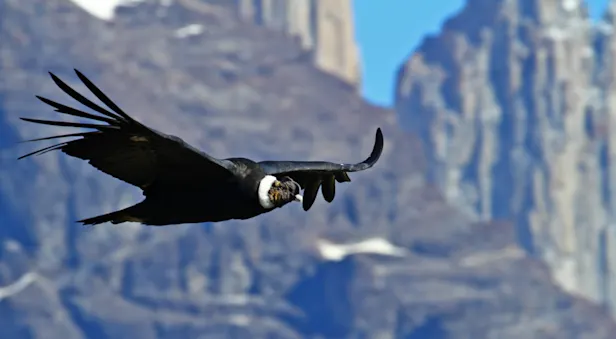Guanaco Facts | Patagonia Wildlife Guide
PHYSICAL DESCRIPTION
Guanacos are camelids endemic to South America and are one of the largest mammals found on the continent, standing approximately 3.5 feet at the shoulder and weighing between 200 and 300 pounds. This slender, fine-boned creature has a long neck and limbs and large, alert brown eyes Its face can be blackish or silvery-grey in color. Guanacos have pointed ears and prehensile, cleft lips, which are used to grasp and maneuver twigs and grasses. Like the llama, the guanaco is double coated—the upper layer of insulative guard hairs keep the guanaco warm, while the soft undercoat is used for making fine garments, which are even more highly prized than that of the alpaca. Guanacos range in color from light reddish-brown to cinnamon with white undersides.
HABITAT & FEEDING HABITS
Guanacos are found in the forests, grasslands, deserts, and shrub lands of the Andean foothills of Argentina and Chile, as well as Peru, in areas ranging from sea level to 13,000 feet. These herbivores live in arid regions and can abstain from water for long intervals, obtaining moisture from the plants they eat. They are both browsers and grazers, foraging for shrubs and grasses, and when these plants are not in ample supply, will also feed on cacti, flowers, fruit and lichen.
BEHAVIOR
The guanaco can run nearly 35 miles per hour—faster than any other Patagonian animal except the puma. At the smallest sign of danger, a guanaco will emit a piercing warning cry, and the herd will swiftly flee across the altiplano of the Andes. Guanacos reside in small herds or family bands. Families consist of a dominant male and several females with their young. Playful calves frolic and romp but will bow their neck to the ground in submission when encountering a mature male. The male will drive off its male offspring when it reaches the age of 6 to 12 months. Males mark their group’s territory by defecting in large communal dung piles. Only a small number—roughly 18 percent—of male guanacos live in family bands. Most young males reside in all-male groups, and many older males are solitary, seeking to start herds of their own.
REPRODUCTION
A female may start to mate at as early as 1 year old but typically waits two or three years before breeding. The mating season occurs from November through February. During this period, male guanacos can become very aggressive and fight violently. Gestation lasts 11 months, and a mother gives birth to one calf between December and February. The young, called chulengo, can stand up within an hour of birth and has a full coat of hair. The calf weighs 17 to 33 pounds at birth and nurses for 11 to 15 months.
CONSERVATION STATUS
Pumas target young chulengos, yet as the population of this wild cat declines, the most substantial threat to guanacos is starvation. In eastern Patagonia, severe droughts caused by climate change, coupled with overgrazing by sheep and cattle, have led to land desertification. Consequently, the guanaco population has plummeted. This creature’s range, once expansive, has been severely reduced due to foraging competition with livestock, over-hunting for pelts, and habitat degradation from human encroachment. The guanaco is classified as critically endangered in Peru and Vulnerable in Chile.
Header Credit: Cassiano Zaparoli
See Guanacos on These Patagonia Adventures

Wild Patagonia: Peaks, Glaciers & Pumas
An all-encompassing expedition straddling Chile and Argentina! Marvel at the granite spires of Torres del Paine, survey the vast ice face of Perito Moreno Glacier, search for pumas and see condors soar.



































